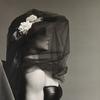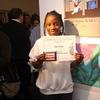MWPAI Exhibition Celebrates Women’s Suffrage and Honors Female Artists
- UTICA, New York
- /
- February 26, 2020
Munson-Williams-Proctor Arts Institute celebrates the 100th anniversary of the ratification of the 19th amendment granting women the right to vote with the exhibition, “Celebrating Suffrage,” featuring more than 200 years of art made by women and honoring women’s innovative creative pursuits before and after they were officially recognized as full citizens of the United States. “Celebrating Suffrage,” on view February 29 through April 19, explores art as a vehicle for women, as individuals or in groups, to reflect, reform, or challenge social beliefs and political practices of their era. Works by artists including Mary Cassatt, Elaine Reicheck, Carrie Mae Weems, and others are drawn from the MWPAI permanent collection and by fulltime women faculty members at PrattMWP College of Art & Design.
“Celebrating Suffrage” examines how women created their place within the larger art community, adding an important vision that has often been overlooked or undervalued. This historic anniversary presents the opportunity to celebrate the contributions to subject matter, materials, and means of expression that women have made to the visual arts in the United States.
The exhibition also features art created by women of the founding families of MWPAI. Helen Munson-Williams commissioned Fountain Elms, collected art, painted floral watercolors, and made silhouettes of people from her inner circle of friends. Because social mores of the 1800s banned women from attending public art schools, she arranged for private art tutors to teach her daughters Maria and Rachel to sketch and paint in watercolor. Maria excelled at painting while Rachel embraced photography as her mode of expression. “Celebrating Suffrage” reveals, for the first time publicly, works of art by these women.
Throughout the 19th century women developed, instead, creative outlets appropriate to their largely homebound circumstances. The earliest works in the exhibition demonstrate the various ways women transformed the materials and subjects available to them into works of art. These practices historically have been dismissed as minor and their makers’ names often are unknown today. Nevertheless, quilting, watercolors, or silhouettes were important means of artistic expression for women who had no access to the education or media required for fine art. Leaping ahead in time, by the 1970s, feminist artists embraced traditional women’s arts, such as china painting or needlecrafts, and celebrated them as worthy counterparts to painting and sculpture.
Since the early 1900s, opportunities for women in the arts have expanded and today there are legions of women painters, sculptors, metalsmiths, printmakers, designers, illustrators, and videographers who are innovators in their fields. Woman suffrage served as a catalyst for these advances. As women continue to work towards equity in art and society, the right to vote is as crucial in 2020 as it was 100 years ago.

100x100_c.jpg)






![Peter Paul Rubens (Flemish, 1577–1640), After Titian (Tiziano Vecelli) (Italian [Venetian], c. 1488–1576), Rape of Europa, 1628–29. Oil on canvas, 71 7/8 x 79 3/8 in. Peter Paul Rubens (Flemish, 1577–1640), After Titian (Tiziano Vecelli) (Italian [Venetian], c. 1488–1576), Rape of Europa, 1628–29. Oil on canvas, 71 7/8 x 79 3/8 in.](/images/c/e2/2e/Jan20_Rape_of_Europa100x100_c.jpg)







